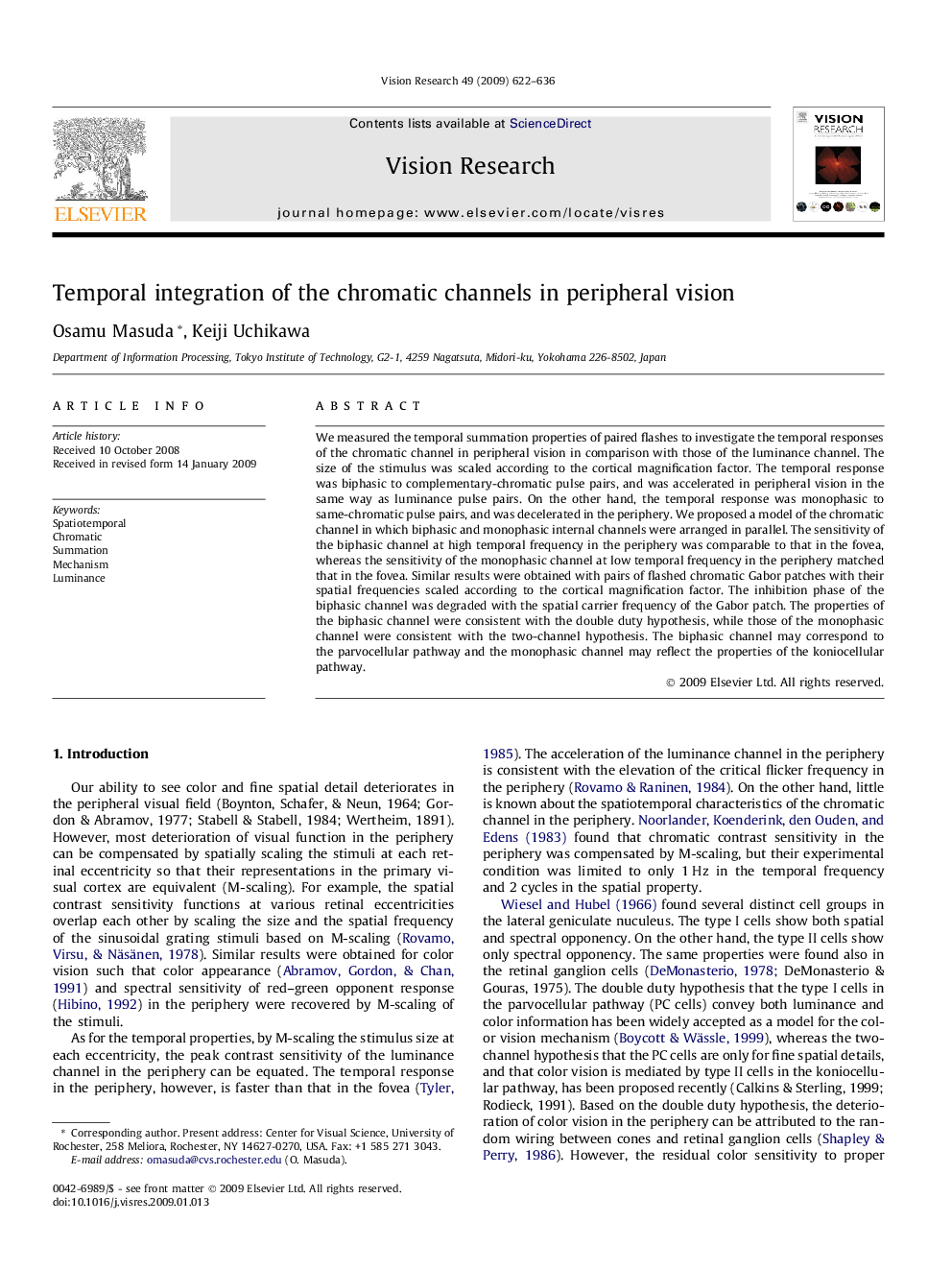| Article ID | Journal | Published Year | Pages | File Type |
|---|---|---|---|---|
| 4034771 | Vision Research | 2009 | 15 Pages |
We measured the temporal summation properties of paired flashes to investigate the temporal responses of the chromatic channel in peripheral vision in comparison with those of the luminance channel. The size of the stimulus was scaled according to the cortical magnification factor. The temporal response was biphasic to complementary-chromatic pulse pairs, and was accelerated in peripheral vision in the same way as luminance pulse pairs. On the other hand, the temporal response was monophasic to same-chromatic pulse pairs, and was decelerated in the periphery. We proposed a model of the chromatic channel in which biphasic and monophasic internal channels were arranged in parallel. The sensitivity of the biphasic channel at high temporal frequency in the periphery was comparable to that in the fovea, whereas the sensitivity of the monophasic channel at low temporal frequency in the periphery matched that in the fovea. Similar results were obtained with pairs of flashed chromatic Gabor patches with their spatial frequencies scaled according to the cortical magnification factor. The inhibition phase of the biphasic channel was degraded with the spatial carrier frequency of the Gabor patch. The properties of the biphasic channel were consistent with the double duty hypothesis, while those of the monophasic channel were consistent with the two-channel hypothesis. The biphasic channel may correspond to the parvocellular pathway and the monophasic channel may reflect the properties of the koniocellular pathway.
